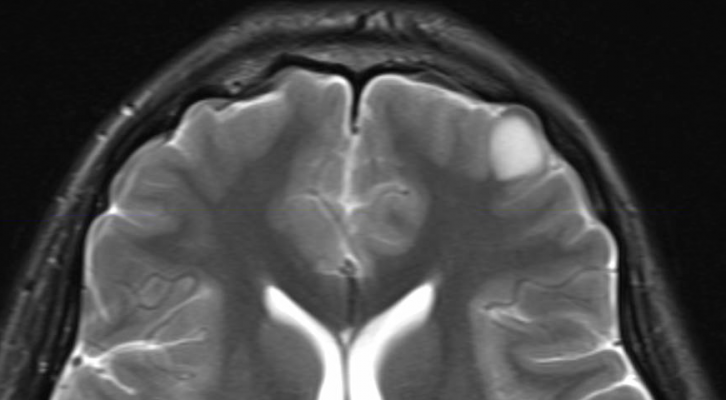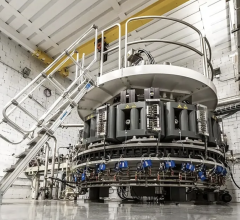
Dec. 3, 2012 – In the management of gliomas — or tumors that originate in the brain — precise assessment of tumor grade and the proliferative activity of cells plays a major role in determining the most appropriate treatment and predicting overall survival. Research published in the December issue of The Journal of Nuclear Medicine (JNM) highlights the potential of imaging with 3'-deoxy-3'-F-18-fluorothymidine (F-18-FLT) positron emission tomography (PET) to noninvasively and accurately provide tumor-specific details to guide management of patients with gliomas.
Gliomas are uncommon neoplasms, and most are diffuse tumors that grow quickly. Patients with glioblastoma, the most malignant and most frequent type of glioma, typically die within two years. Ensuring the most appropriate treatment in a timely manner is of utmost importance for these patients.
Two studies in the December issue of JNM explore the utility of F-18-FLT PET for providing prognostic information for patients with gliomas. “The accumulation of F-18-FLT is dependent on the presence of thymidine kinase-1, which is closely associated with cellular proliferation. In several clinical studies, F-18-FLT has been validated for evaluation of tumor grade and cellular proliferation in gliomas,” noted Yuka Yamamoto, M.D., lead author of the study, “Correlation of 18F-FLT Uptake with Tumor Grade and Ki-67 Immunohistochemistry in Patients with Newly Diagnosed and Recurrent Gliomas.”
In the study led by Yamamoto, researchers retrospectively evaluated F-18-FLT uptake in patients with newly diagnosed (36 patients) and recurrent (20 patients) gliomas. Patients underwent F-18-FLT PET scans; tissue specimens were then taken to obtain a pathological diagnosis. The F-18-FLT images were analyzed by two nuclear medicine physicians, who identified tumor lesions as areas of focally increased uptake exceeding that of normal brain background, and who determined the tumor-to-normal (T/N) ratio. Results the 18-F-FLT PET scan were compared with tumor grade and proliferative activity estimated from the tissue specimens.
Researchers found that there was significant difference in the T/N ratio among different grades of newly diagnosed and recurrent gliomas. F-18-FLT uptake correlated more strongly with the proliferative activity in newly diagnosed gliomas than in recurrent gliomas and provided a more comprehensive view to determine tumor grade as compared to a single tissue specimen.
The correlation between proliferative volume and prediction of overall survival for high-grade glioma patients was also examined in the article “3'-Deoxy-3'-18F-Fluorothymidine PET-Derived Proliferative Volume Predicts Overall Survival in High-Grade Glioma Patients.” In the study, 26 consecutive patients underwent preoperative 18-F-FLT PET/computed tomography (CT) scans. The maximum standardized uptake value (SUVmax) was calculated and three different PET segmentation methods were used to estimate the proliferative volume. The prognostic value of the SUVmax and the different methods to approximate proliferative volume for overall survival were then assessed.
The mean overall survival for the patients in the study was 397 days; 19 patients died during this time. Based on this follow-up information, researchers determined that the signal-to-background ration (SBR) for an adaptive threshold delineation (PVSBR) method showed a significantly better association with overall survival then the SUVmax or the other two PET segmentation methods.
“The predictive value of the proliferative volume for the overall survival of patients seems to be independent of the postoperative treatment,” explained Albert J.S. Idema, M.D., lead author of the study. “The importance for patients is the possible utilization of 18-F-FLT PET to select the most appropriate treatment options. The very limited burden that the procedure causes to the patient is a further asset.”
The development of new molecular imaging agents, such as F-18-FLT, which is currently used only for research purposes, has enabled clinical researchers to utilize the agents to assess the characteristics of tumors and their therapeutic response. “We hope that these findings will be helpful for identifying the role of F-18-FLT in assessing the response to antiproliferative treatment in patients with gliomas,” said Yamamoto.
Authors of the article “3'-Deoxy-3'-18F-Fluorothymidine PET-Derived Proliferative Volume Predicts Overall Survival in High-Grade Glioma Patients” include Albert J.S. Idema, Hieronymus D. Boogaarts and J. Andre Grotenhuis, Department of Neurosurgery, Radboud University Nijmegen Medical Centre, Nijmegen, The Netherlands; Aswin L. Hoffmann and Esther G.C. Troost, Department of Radiation Oncology, Radboud University Nijmegen Medical Centre, Nijmegen, The Netherlands, and Department of Radiation Oncology (MAASTRO), GROW School for Oncology and Developmental Biology, Maastricht University Medical Center, Maastricht, The Netherlands; Pieter Wesseling, Department of Pathology, Radboud University Nijmegen Medical Centre, Nijmegen, The Netherlands, and Department of Pathology, VU University Medical Center, Amsterdam, The Netherlands; Arend Heerschap, Department of Radiology, Radboud University Nijmegen Medical Centre, Nijmegen, The Netherlands; Winette T.A. van der Graaf, Department of Medical Oncology, Radboud University Nijmegen Medical Centre, Nijmegen, The Netherlands; and Wim J.G. Oyen, Department of Nuclear Medicine, Radboud University Nijmegen Medical Centre, Nijmegen, The Netherlands.
Authors of the article “Correlation of 18F-FLT Uptake with Tumor Grade and Ki-67 Immunohistochemistry in Patients with Newly Diagnosed and Recurrent Gliomas”include Yuka Yamamoto, Yuko Ono, Fumitoshi Aga, and Yoshihiro Nishiyama, Department of Radiology, Faculty of Medicine, Kagawa University, Kagawa, Japan; Nobuyuki Kawai, Department of Neurosurgery, Faculty of Medicine, Kagawa University, Kagawa, Japan; and Nobuyuki Kudomi, Department of Medical Physics, Faculty of Medicine, Kagawa University, Kagawa, Japan.
For more information: http://jnm.snmjournals.org


 July 30, 2024
July 30, 2024 








